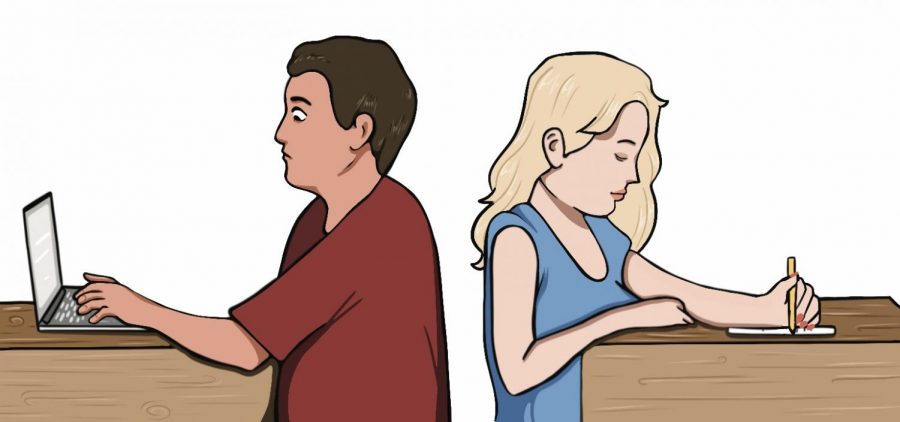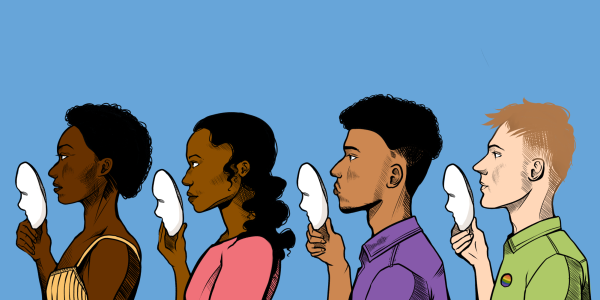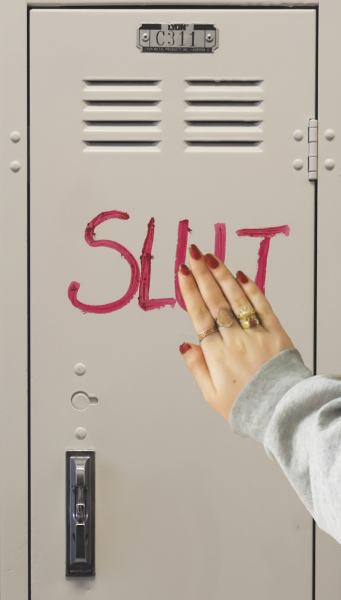Tech Talk
Faculty and students discuss the shift away from traditional teaching methods and the implications of having increased amounts of technology in the classroom.
Illustration by Alexa Druyanoff
While the school encourages taking notes by hand, many students have begun to utilize technology in class.
November 20, 2021
Shaking out her sore wrists, Kara Yoon ’23 looked down at her calloused fingers. She had been scribbling pages and pages of art history notes by hand in her orange three-ring spiral notebook, an arduous process that Yoon said prompted her to finally decide to turn to using her computer as a note-taking device.
Yoon said she initially took notes by hand in her Art History Honors class out of habit and because she believed handwritten notes would increase her retention of class material. She said this switch to digitized note-taking also grants her easier access to the artwork she studies.
“I tend to take too many notes, and art history is different from regular history because we have to analyze art pieces,” Yoon said. “I made the decision to transfer to computer notes for art history because it is much more efficient and because I can paste in the photos into the document, so it is easier to reference them when I am studying.”
Although Yoon made the switch to technology in Art History Honors, she said she varies her note-taking techniques depending on the subject.
“Art history is the only class I take notes [from] my computer,” Yoon said. “For the rest of [my classes], I take notes by hand. For science and math, there are numbers and equations, so it is easier to take notes on paper. I also think teachers like it more when students don’t have their computers open in class.”
Over the past 10 years, Head of Upper School Beth Slattery said she has noticed a shift from traditional teaching and learning methods to more contemporary practices that require technology, such as taking notes with an iPad.
Associate Head of School Laura Ross said this trend was accelerated by the COVID-19 pandemic. Ross said every student should find the note-taking style that works best for them. Ross said she prefers taking notes on a computer because of the quality of her handwriting and difficulty keeping up with speakers while she is writing.
“Every human has to find a system that works for them,” Ross said. “There is so much conflicting research. There are all of these resources that say the pencil on paper is the best way. Other studies say if you take Cornell Notes online, that is better. It doesn’t feel to me like there is a definitive [best note-taking strategy].”
Adison Gamradt ’23 said she relied on an iPad to complete work during online classes but has reverted back to taking notes on paper since returning to in-person school.
“During Zoom school I did all my work on my iPad,” Gamradt said. “I think [using technology] worked really well with the Zoom format, but now that we are back in-person and school is very paper-based, I retain the information better with pen and paper.”
Gamradt said she always preferred taking notes on paper but decided to deviate from her note-taking habits once she began digital illustrations with her iPad.
“The school definitely encourages taking notes by hand as opposed to by computer, but all my teachers have been fine with me taking notes on an iPad,” Gamradt said.
History and Social Studies Teacher Celia Goedde said she noticed many students now taking notes on iPads. Goedde said she encourages students to take hand-written notes either with a pen on paper or with an iPad.
“My reputation is as more of an old school teacher,” Goedde said. “In the [2010s], a lot of studies came out in places like UCLA or Stanford, and they found that taking notes on paper was actually better for students to learn and retain information. Of course, that’s the outcome that I want for most of my students. The research has shown it is the hand to brain connection as you are writing something that makes you retain it better.”
Goedde said hand-writing on an iPad has similar benefits to taking notes on paper.
“If students have accommodations to use a laptop, they can use a laptop,” Goedde said. “My only concern [with technology in the classroom] is the students’ attention. It’s pretty well-documented now that [technology] decreases everyone’s attention, not just students [but also] teachers. Less screen time is, in general, better, particularly for students, because for teenagers, this is the time when you’re building up your ability and stamina to pay attention. [More students have been] taking handwritten notes on a tablet, and that seems to be really good. I really think that is kind of the sweet spot, the best of both worlds.”
Ross said when she observes classes, she occasionally sees students distracted by their technology and believes teachers should be intentional about finding times for class to be technology-free.
“I observe a ton of classes and every so often, I sit next to someone who has their laptop [open] and they are shopping or buying clothes online,” Ross said. “We don’t want to deny a kid for whom taking notes on the computer is the best way, so it’s kind of a balance. It’s hard to save everyone from themselves. If people want to not pay attention, you can’t really stop them. But at the same time, when you think about a 75-minute period, there should be times where we all [turn our technology off], and talk.”
Gamradt said she observed new ways the school has incorporated technology into the classroom.
“When a student is absent for a long period of time, they will zoom in,” Gamradt said. “I think that is very helpful for students who may be very sick, injured or just can’t come to school because they will be able to catch up, which didn’t happen before we had access to Zoom.”
Slattery said the school allows teachers to determine whether it would be a helpful accommodation for an absent student to zoom into class.
“Like most things we do here, we are trying to give teachers trust as the experts in their class,” Slattery said. “An English teacher would [feel], zooming into an English classroom is not necessarily the best way to get a kid caught up, but zooming a kid into a math class or part of a history lecture might actually be the best way to do it.”
Grady Ramberg ’24 said the environment of his history class was not heavily impacted by a student who zoomed in but technology in the classroom can be distracting in other ways.
“Technology can sometimes be distracting in the classroom, especially when people have their computers open and are bored,” Ramberg said. “But if it is used well, it can be very helpful in making the class more entertaining.”
Slattery said technology becomes problematic when students use their devices to surf the internet or text their parents.
“The only [negative] part of [technology in the classroom] is the distraction,” Slattery said. “It’s the reason we ask students to put their cell phones away. It’s super tempting. During Zoom [meetings], I could barely stay focused in a meeting without clicking on something else. For 17-year-olds, I can just imagine that that temptation is even harder in the 75-minute period. If you only have a notebook sitting there, it’s harder to be as distracted.”
Slattery said the new block schedule prompted teachers to utilize technology in the classroom to improve the learning experience of their students.
“I do find more teachers use technology to enhance the [learning] experience,” Slattery said. “[Teachers have] the ability to project things, the ability to Zoom or use EdPuzzles in order to enhance the experience. When I think about where we were seven to 10 years ago, people assumed that technology would actually diminish the teacher-student experience. Technology is supposed to enhance, not detract.”































